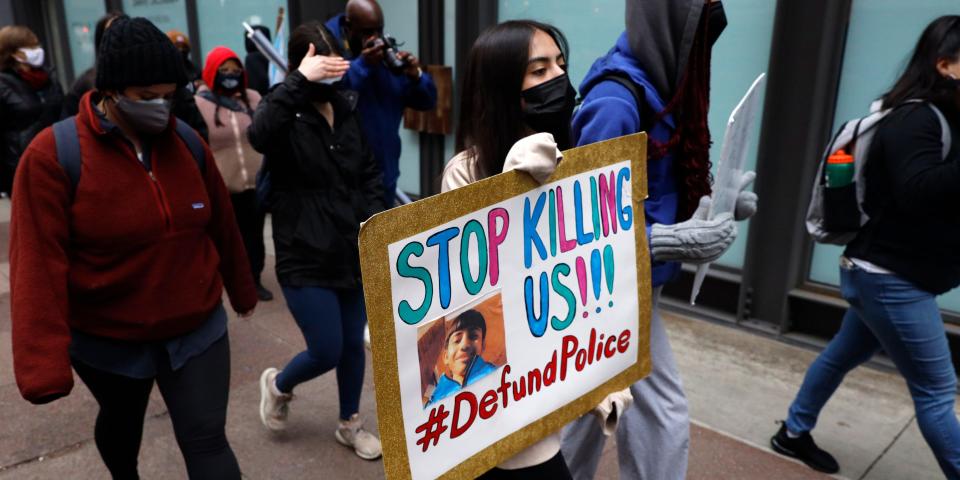There were only 18 days in 2020 that the police didn't kill somebody, according to police accountability data

Police officers killed more than 1,100 people in 2020, according to Mapping Police Violence.
That averages out to about three police killings each day.
Nearly 30% of those killed were Black and more than 20% were Hispanic.
The police killings of 13-year-old Adam Toledo in Chicago and 20-year-old Daunte Wright in Minneapolis, both within the last month, have sparked fresh outrage over officer killings, prompting yet another, national reckoning over law enforcement's use of force and the systemic racism that runs deep in America.
In 2020, there were just 18 days where police did not kill somebody, according to data collected by Mapping Police Violence. Many dates saw upwards of four police killings in the same 24-hour period across the country, the database shows.
-molly conger (@socialistdogmom) April 16, 2021
Mapping Police Violence shows more than 1,100 people were killed by police officers during 2020, 28% of whom were Black. Despite making up nearly 30% of police killings, Black people only constitute 13% of the US population, according to US Census data.
Black people were nearly three times more likely to be killed by an officer than white people, and were 1.3 times more likely to be unarmed than white people, Mapping Police Violence found.
Only 16 of the 1,128 incidents resulted in charges filed against the officer - a mere .01%. Even fewer resulted in convictions.
The Washington Post's Fatal Force project, which tracks fatal shootings committed by on-duty police officers, reported 1,020 gun deaths at the hands of the police during 2020 and also found that Black people and Hispanic people were shot and killed by officers at a disproportionate rate.
With a lack of comprehensive federal data on police killings in the country each year, databases like Mapping Police Violence and The Washington Post's Fatal Force project have taken up the charge of tracking these killings.
Mapping Police Violence's database, which includes information on police killings since 2013, is sourced from the three "largest, most comprehensive and impartial crowdsourced databases" on police killings, including FatalEncounters.org, the US Police Shootings Database, and KilledbyPolice.net, the group says. Data scientists also used social media, obituaries, criminal record databases, and police reports to identify the race of most victims and add additional details about the killings.
The Post's database, which has tracked deadly police shootings since 2015, is compiled using news accounts, social media postings, and police reports, according to the outlet.
Despite a summer of education and activism, spurred on by the killing of George Floyd, data suggests the problem remains.
In the first 106 days of 2021, police have already killed at least 268 people, according to Mapping Police Violence, averaging out to more than two deaths a day.
Read the original article on Insider

 Yahoo Finance
Yahoo Finance 